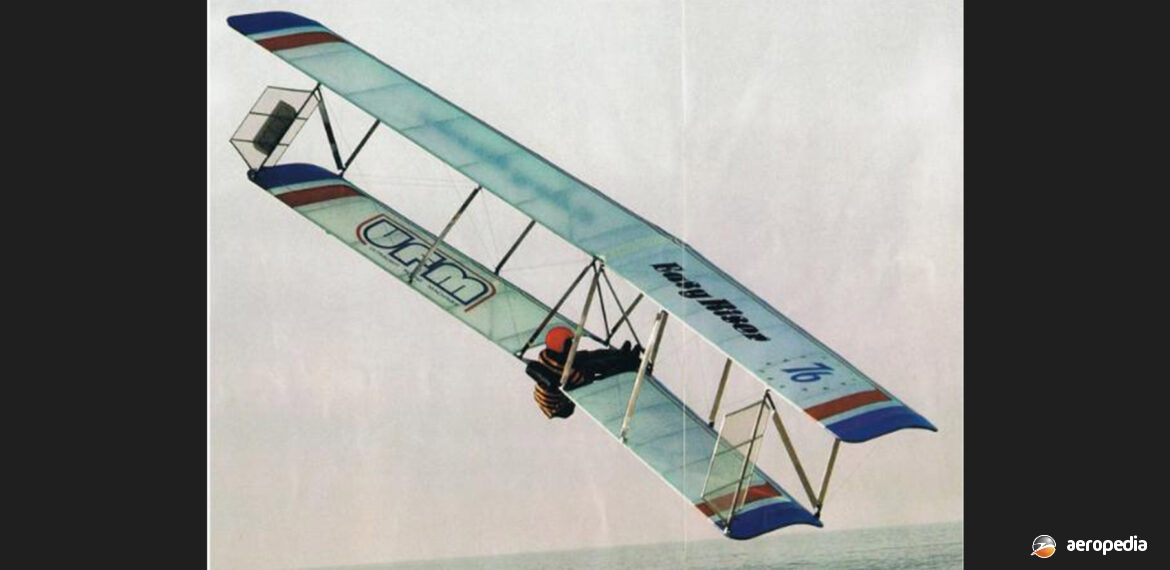Photograph:
An Easy Rider in the United States (Ultralightnews.com)
Country of origin:
United States of America
Description:
Single-seat powered hang glider
Power Plant:
One 8.2 kw (11 hp) McCulloch MAC-101 two-cylinder, in-line, air-cooled engine
Specifications:
- Wingspan: 9.14 m (30 ft 0 ft)
- Length: 2.74 m (9 ft 0 in)
- Height: 1.2 m (4 ft)
- Wing area: 16 m² (172 sq ft)
- Max speed: 64 km/h (40 mph)
- Cruising speed: 40 km/h (25 mph)
- Stalling speed: 32 km/h (20 mph)
- Service ceiling: 2,743 m (9,000 ft)
- Rate of climb: 91 m/min (300 ft/min)
- Range: 161 km (100 miles)
- Wing loading: 9.2 kg/m² (1.88 lb/sq ft)
- Empty weight: 54 kg (120 lb)
- Loaded weight: 145 kg (320 lb)
History:
The Easy Rider was a single-seat ultra-light or hang glider designed by Lawrence Mauro and John Moody of Ultralight Flying Machines in the United States. The prototype made its first flight in 1975, being placed into limited production, examples being sold around the world. It has been a popular aircraft and as late as 2002 it was still being produced as an un-powered glider. It was a development of a biplane hang-glider known as the Kiceniuk Icarus II and an engine was installed to permit the pilot to launch from flat terrain.
Early variants had an engine fitted to the foot launched model, control being obtained by means of weight shift for pitch and rudders on the wing tips for roll and yaw. Eventually it was decided to fit a tricycle undercarriage for ease of take-off for some pilots, and later a horizontal stabiliser and elevator were fitted to make the machine easier to control.
The machine had an aluminium structure with stamped ribs, and it was covered in fabric, Mylar or something similar. Engines which could be installed included the McCulloch MAC-101, the 11 kw (15 hp) Hirth F-36 and the Solo 210. In 1979 one was fitted with solar cells and an electric motor. Production of the powered variant ceased in about 1980.
A few examples are known to have been imported to this region, one being built in New Zealand by Mark Elworthy, which was flown from White Horse Hill near Waimate and other sites in the South Canterbury region. One of Mr Elworthy’s machines is on display at the Timaru Aviation Museum.

